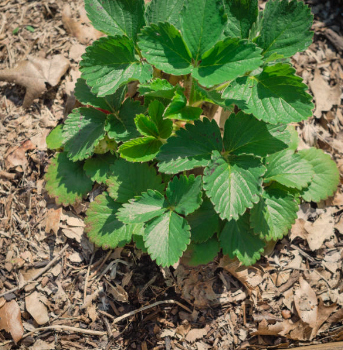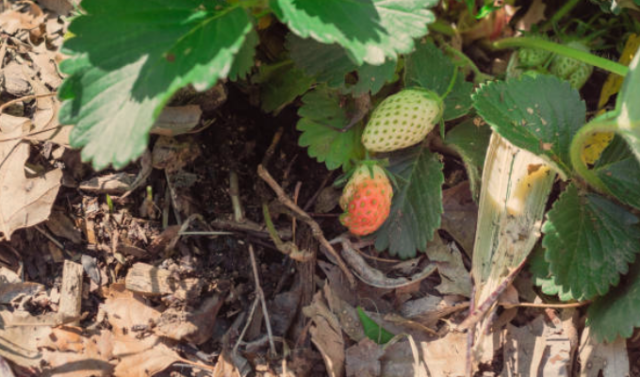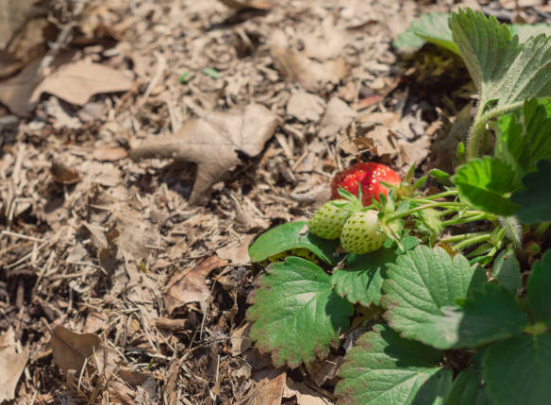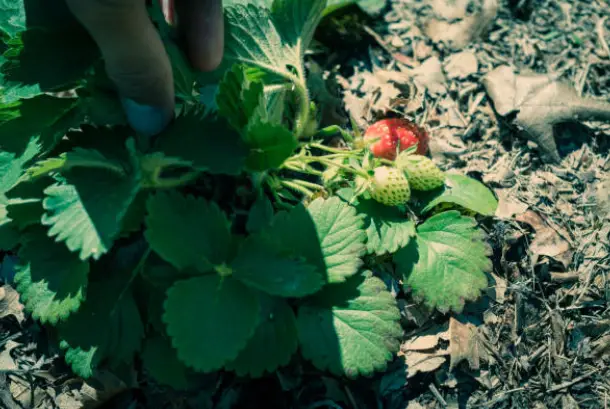For good reason, strawberries are among the most often grown fruits in home gardens. There are few things that compare to the delightful flavor of a juicy, fresh strawberry straight off the vine. And when cultivated correctly, strawberries may flourish in Texas thanks to the state’s extended growing season and plenty of sunshine.
You are in luck if you are a Texas gardener who wants to include strawberries in your edible garden. Everything you require to plant, nurture, and harvest delicious strawberries in the Lone Star State is included in this guide.
When to Plant Strawberries in Texas
In Texas, late September to early November is the best time of year to cultivate strawberries. Before lying dormant for the winter, strawberry plants can strengthen their root systems thanks to the colder fall temperatures.

How To Plant Strawberries In Texas
It is also feasible to plant in the spring, from late February to early April, though once established, the plants may become more tolerant of the intense Texas summer heat. Because they were dormant during the winter, strawberries planted in the fall will be more tolerant of the hot summer weather.
Choosing Strawberry Varieties for Texas
When it comes to growing in the warm Texas climate, there are differences between all strawberry cultivars. Some types are just not meant to survive the severe summer heat and humidity that most of the state experiences.

Some top strawberry varieties recommended for Texas gardens include:
Camino Real – This variety was specifically bred at Texas A&M for the hot, humid conditions of the state. It produces large, sweet berries throughout the season.
Albion – An ever-bearing (day-neutral) variety that provides multiple harvests from spring through fall.
San Andreas – Another Texas A&M variety with excellent heat tolerance and disease resistance. Produces firm, sweet berries.
Festival – An early-season June-bearer that does well in East Texas. High yields of plump, tasty fruit.
Selecting a Planting Site
Strawberries need at least 6-10 hours of direct sunlight per day, so choose your planting site accordingly. They also appreciate well-draining soil amended with compost or other organic matter to improve moisture retention.
To guarantee proper drainage and soil quality, planting in containers or raised beds is a terrific idea. Steer clear of regions that can contain Verticillium wilt, a fungal disease that can completely destroy strawberries.
Planting Strawberries
It is time to plant the strawberries after you have made the planting space compost-ready and made sure drainage is adequate! Place them in rows two to three feet apart, 12 to 15 inches apart.
Plant so that the middle of the crown (where stems meet roots) is level with the soil surface. Gently firm soil around the plants and water thoroughly after planting. Add a 2-3 inch layer of mulch like straw, leaves, or pine bark around (but not on) the plants to preserve moisture and discourage weeds.
Caring for Strawberry Plants
After planting, keep strawberry plants well-watered during establishment. Aim for 1-2 inches of water per week during the growing season. Use drip irrigation or soaker hoses to keep foliage dry and minimize disease issues.

Renew mulch as needed to maintain 2-3 inches around plants. In early spring, apply a balanced fertilizer according to package instructions. Fertilize again after renovation (see below).
Remove any blossoms that appear on fall-planted strawberries during the first growing season. This enables the plants to focus their energy on developing strong root systems instead of producing fruit.
Renovation and Winter Protection
It is critical to “renovate” your strawberry plants for ongoing output after the harvest season. This include removing any dead leaves, fertilizing, thinning out overgrown plants, and reapplying mulch. Renovating a plant gives it the vitality it needs to yield a healthy crop the next year.
In colder parts of Texas where temperatures dip below 20°F, strawberries may need winter protection with a thick mulch layer or by covering plants with straw, leaves, or a row cover during hard freezes. Unprotected plants may suffer cold damage.
Harvesting Strawberries
Strawberries are typically ready to harvest in late spring or early summer in Texas, usually April to May for fall-planted crops. Keep an eye on the developing berry color and sample a few – they’re ready when they turn fully red and develop peak sweetness and flavor.

Plant Strawberries
For highest quality, harvest in the morning after the dew has dried by grasping the stem just above the berry and snapping it off the plant with a gentle pull and twist. Avoid pulling too hard, as the fruit caps may remain on the plant.
Expect a heavy harvest for about 2-3 weeks, after which production will slow. Ever-bearing varieties may provide additional smaller harvests in late summer and fall.
For optimal shelf life, store strawberries in a cool, dry place after picking. Rinse only the berries you intend to consume right away, as too much moisture promotes rotting.
Potential Issues
While generally easy to grow, strawberries do face a few common issues in Texas that gardeners should watch for:
Diseases – Verticillium wilt, leaf spots, and fruit rots can all plague strawberries. Avoid these by choosing resistant varieties, practicing good sanitation, and using drip irrigation to keep foliage dry.
Insects – Sap beetles, spider mites, and tarnished plant bugs are among the insect pests that may affect strawberries. Physical barriers like row covers during bloom can help, as well as organic insecticidal sprays if infestations occur.
Heat/Drought – Mulch and consistent moisture are key for helping strawberries endure the intense Texas heat and drought. Shading plants with row covers may also be beneficial during summer’s peak.
Birds – As fruits ripen, birds often flock to strawberry patches to snack on the sweet bounty. Netting or scare tactics may be needed to keep feathered friends away.
Fresh ruby-red strawberries can be harvested in abundance for smoothies, salads, baked goods, and more by Texas gardeners who are diligent in choosing the appropriate types and supplying enough sun, moisture, and nutrients!




